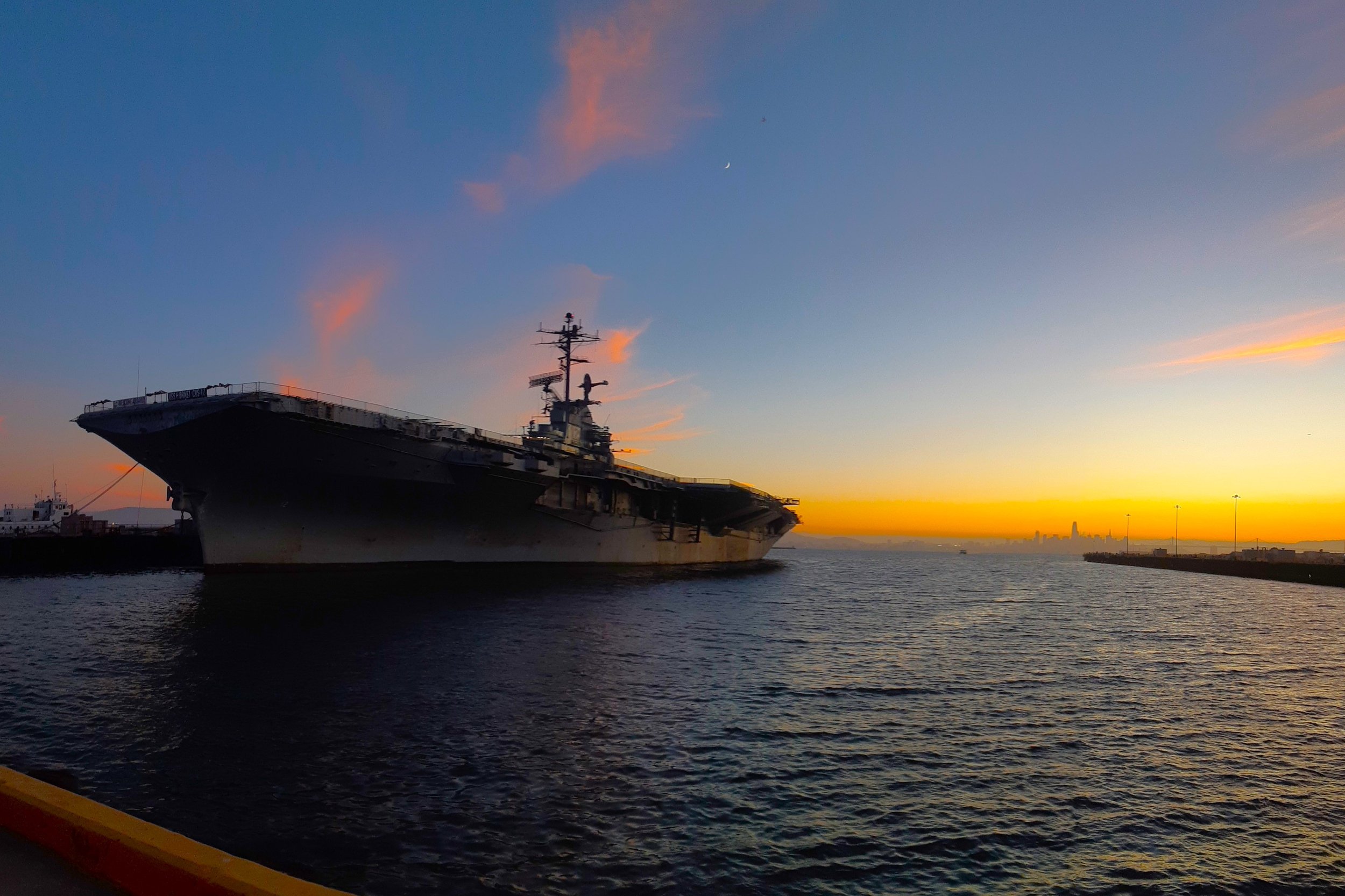Two Nights on Apollo 11's Aircraft Carrier
/Over the years, I’ve been asked to do some interesting things on the anniversary of the first moon landing, including speaking at many museums around the world. For example, on the 50th, I was asked to speak about the mission at The Richard Nixon Presidential Library and Museum – Nixon being the president at the time of the mission.
For the 54th anniversary, the staff of the USS Hornet asked me to give a talk aboard their historic aircraft carrier. The Hornet was the ship that picked up the crew after splashdown in the Pacific Ocean. It also picked up the Apollo 12 crew a few months later. There are iconic images of the Apollo 11 crew being greeted by a jubilant President Nixon inside the ship. I agreed it would be a great place to talk about the mission.
It was, in many ways, the Hornet’s last hurrah. Not long after, it was retired for good. It is now The USS Hornet Sea, Air and Space Museum in Alameda, with spectacular views across the bay to San Francisco.
I’d toured the Hornet once before many years ago, and appreciated the museum staff’s efforts to keep the ship open to the public so its history could be shared. The staff offered to bring me up from San Diego, all expenses paid, but I thought of something that would be more attractive to me plus cheaper for them.
I asked if I could spend two nights on the ship.
It’s quite something to arrive back at an enormous aircraft carrier at sunset on the bay, with a crescent moon in the sky. I didn’t have the key to the ship. But I had the key to a room on the ship, and that felt like the same thing.
For the first night there were only three of us on the whole ship – two other people were apparently staying onboard, although I never saw them at night.
One of them I met the next day. Horace had served aboard the ship over half a century ago, and had not slept on it since the time of the moon landings. He had been a crane operator on the flight deck, and had practiced hauling a boilerplate mockup spacecraft aboard. On the day of the actual splashdown he was the backup crane operator, so got to take some amazing photographs of the spacecraft being pulled aboard. He told me that after half a century, he thought he’d remember how to get around the ship, but he was getting lost in the warren of corridors. I enjoyed looking through his old photo album, which included photos of him shaking hands with the President.
Spending the night could have felt spooky – but it didn’t. The staff told me that people often ask to spend multiple nights, but find that one is enough and change their plans. A metal ship with no one aboard, and no engines running, is deeply, deeply dark and silent. I loved it. I had a spacious three-bunk berth that junior officers would have used, by the Foc’s’le and the Center Line Elevator, steps from the Hangar Deck. I got one of the best sleeps I’d had in a long time. There was even hot water, and a shower down the hallway. It was easy to imagine living aboard at the time of the Apollo missions. I thought back to writing books with Apollo 15’s Al Worden, and how he described his night aboard a ship after returning from the moon. I imagined his room would have been similar. What thoughts of traveling to the moon did the crews of Apollo 11 and 12 have within the hull of this ship?
I enjoyed exploring the maze-like lower decks of the ship, and contrasting that with the wide, spacious flight deck in the morning, listening to the gulls as the sun rose over the nearby hills and lit up the city. To hear the hum of ships on the bay, smell the fresh air, and enjoy the incredible views is a wonderful way to wake up.
The event day itself was busy – with Star Wars cosplayers adding a surreal feel to everything. I was on a panel with a fellow Brit, space journalist Sarah Cruddas, as well as Nathalie Cabrol and Pascal Lee from the SETI institute. We talked about the past, present, and future of space exploration. Nathalie and Pascal are from France, and I jokingly remarked at one point how it always seems to be Europeans telling Americans about their own space history – but added more seriously that it shows how much of a global event for all humankind the moon landings were.
I saw one little kid wearing a space suit in the audience, and asked him to do something for me. At sunset, I said, would he look for the crescent moon in the sky? And think, today I was on a ship that picked up people who came back from there? He said he would.
Later that day, totally alone up on the wide flight deck, looking at an incredible sunset over San Francisco, I looked at that moon again myself. I hope he did too.





